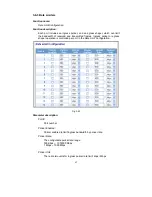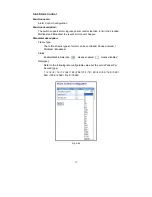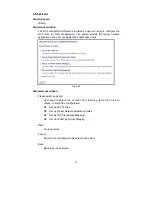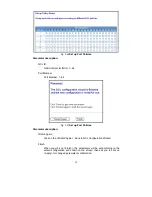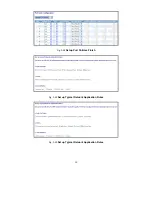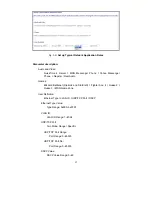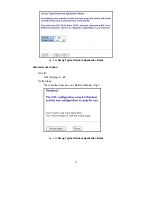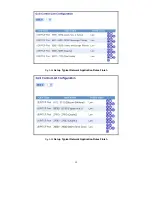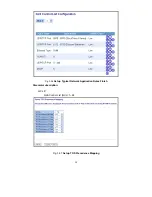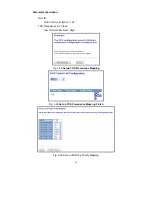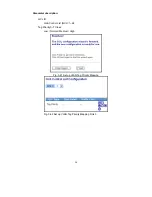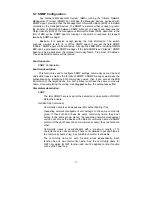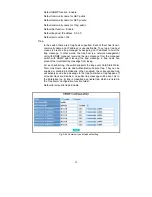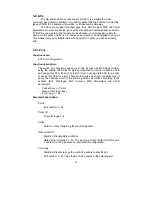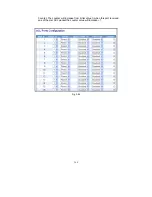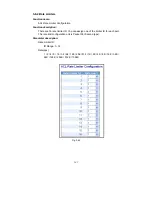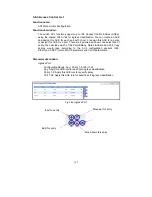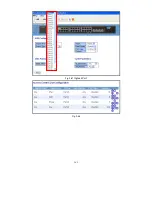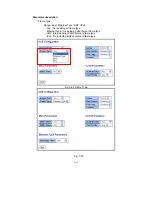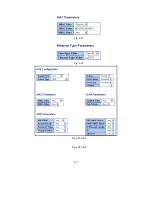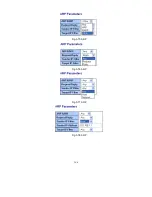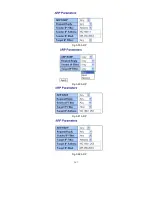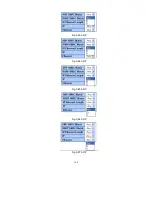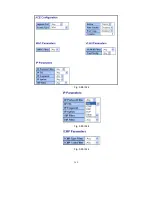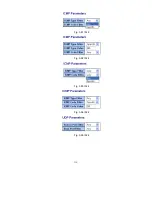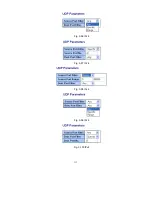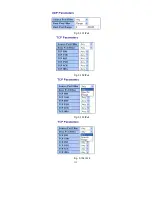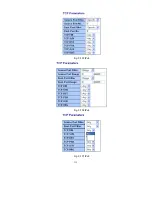
99
3-8. ACL
The GS-2224L switch access control list (ACL) is probably the most
commonly used object in the IOS. It is used for packet filtering but also for selecting
types of traffic to be analyzed, forwarded, or influenced in some way.
The ACLs are divided into EtherTypes. IPv4, ARP protocol, MAC and VLAN
parameters etc. Here we will just go over the standard and extended access lists for
TCP/IP. As you create ACEs for ingress classification, you can assign a policy for
each port, the policy number is 1-8, however, each policy can be applied to any port.
This makes it very easy to determine what type of ACL policy you will be working
with.
3-8-1.Ports
Function name:
ACL Port Configuration
Function description:
The switch ACL function support up to 128 Access Control Entries (ACEs),
using the shared 128 ACEs for ingress classification. You can create an ACE
and assign this ACE for each port with <Any> or assign this ACE for a policy
or assign this ACE for a port. There are 8 policies, each port can select one of
policy, then decides which of the following actions would take according to the
packet’s IPv4, EtherType, ARP Protocol, MAC Parameters and VLAN
parameters:
-
Packet Deny or Permit
-
Rate Limiter (Unit: pps)
-
Port Copy (1 – 24)
Parameter description:
Port #:
Port number: 1~24
Policy ID:
Policy ID range:1~8
Action:
Permit or Deny forwarding the met ACL packets
Rate Limiter ID:
Disabled: Disable Rate Limitation
Rate Limiter ID Range: 1~16. To select one of rate limiter ID for this port,
it will limit met ACL packets by rate limiter ID configuration.
Port Copy:
Disabled: Disable to copy the met ACL packets to specific port
Port number: 1~24. Copy the met ACL packets to the selected port
Summary of Contents for GS-2224L
Page 1: ......
Page 2: ......
Page 34: ...24 Fig 2 15 Office Network Connection Fig 2 14 Peer to peer Network Connection ...
Page 78: ...68 Fig 3 28 ...
Page 83: ...73 Fig 3 31 ...
Page 91: ...81 Fig 3 39 Fig 3 40 Fig 3 41 ...
Page 113: ...103 Fig 3 67 Ingress Port Fig 3 68 ...
Page 115: ...105 Fig 3 71 Fig 3 72 Fig 3 73 ARP Fig 3 74 ARP ...
Page 116: ...106 Fig 3 75 ARP Fig 3 76 ARP Fig 3 77 ARP Fig 3 78 ARP ...
Page 117: ...107 Fig 3 79 ARP Fig 3 80 ARP Fig 3 81 ARP Fig 3 82 ARP ...
Page 118: ...108 Fig 3 83 ARP Fig 3 84 ARP Fig 3 85 ARP Fig 3 86 ARP Fig 3 87 ARP ...
Page 119: ...109 Fig 3 88 IPv4 Fig 3 89 IPv4 Fig 3 90 IPv4 ...
Page 120: ...110 Fig 3 91 IPv4 Fig 3 92 IPv4 Fig 3 93 IPv4 Fig 3 94 IPv4 Fig 3 95 IPv4 ...
Page 121: ...111 Fig 3 96 IPv4 Fig 3 97 IPv4 Fig 3 98 IPv4 Fig 3 99 IPv4 Fig 3 100 IPv4 ...
Page 122: ...112 Fig 3 101 IPv4 Fig 3 102 IPv4 Fig 3 103 IPv4 Fig 3 104 IPv4 ...
Page 123: ...113 Fig 3 105 IPv4 Fig 3 106 IPv4 Fig 3 107 IPv4 ...
Page 124: ...114 Fig 3 108 IPv4 Fig 3 109 IPv4 Fig 3 110 IPv4 Fig 3 111 IPv4 ...
Page 125: ...115 Fig 3 112 IPv4 Fig 3 113 IPv4 Fig 3 114 IPv4 ...
Page 126: ...116 Fig 3 115 IPv4 Fig 3 116 IPv4 Fig 3 117 IPv4 ...
Page 127: ...117 Fig 3 118 Action Fig 3 119 Rate Limiter ...
Page 128: ...118 Fig 3 120 Port Copy Fig 3 121 DMAC Filter ...
Page 129: ...119 Fig 3 122 VLAN ID Filter Fig 3 123 VLAN ID Filter Fig 3 124 Tag Priority ...
Page 141: ...131 Fig 3 126 Set up Policy Rules Fig 3 127 Set up Policy Rules Fig 3 128 Set up Policy Rules ...
Page 143: ...133 Fig 3 132 Set up Port Policies Fig 3 133 Set up Port Policies Finish ...
Page 159: ...149 Fig 3 145 ...
Page 204: ...194 Fig 4 1 Fig 4 2 ...

